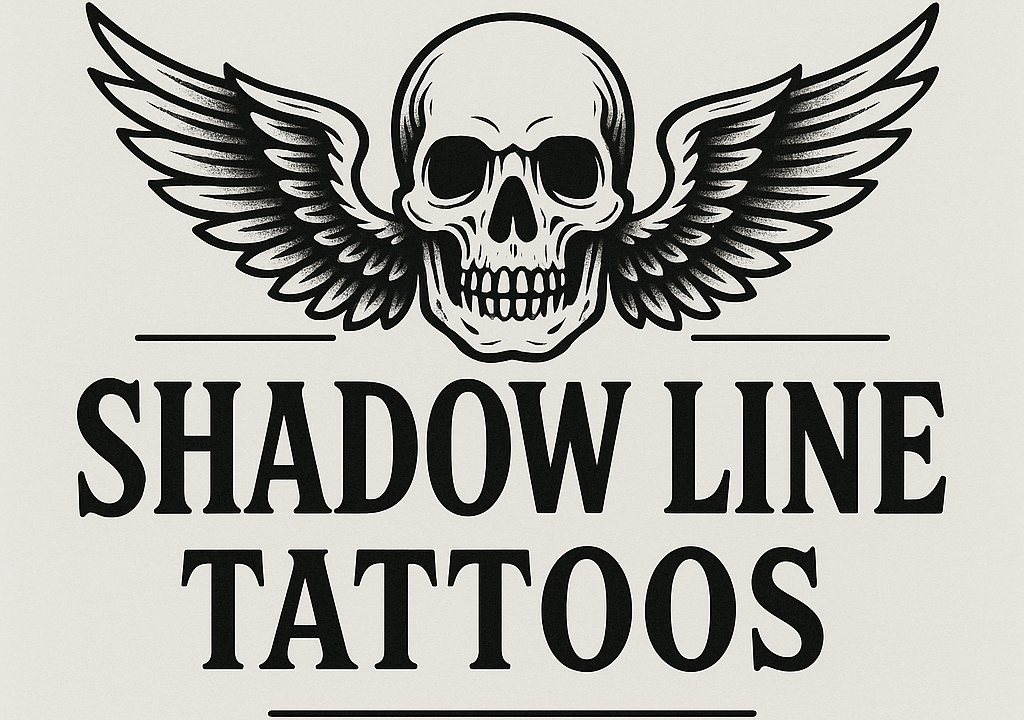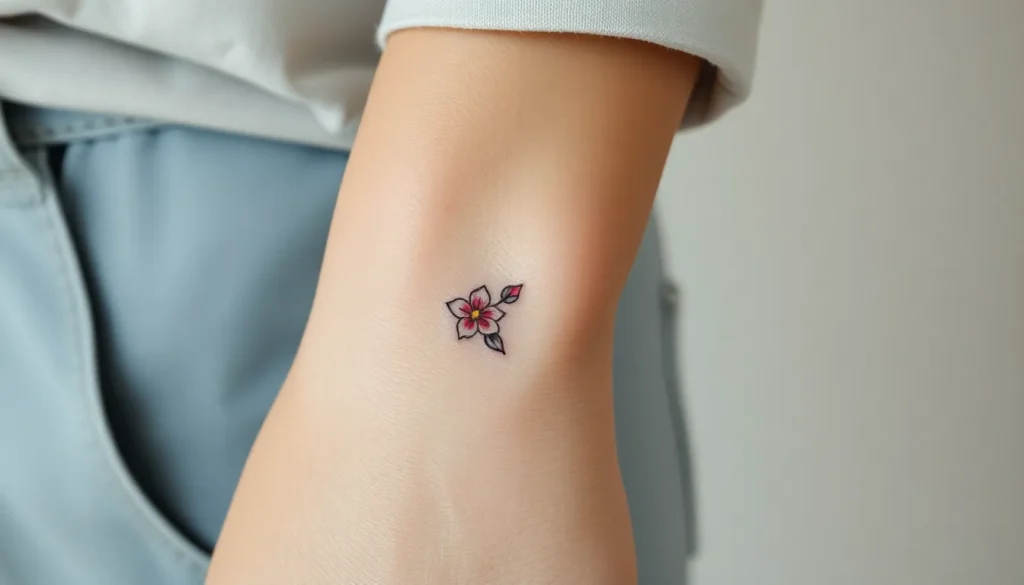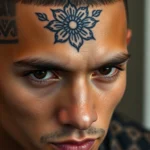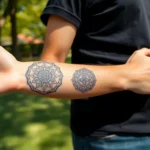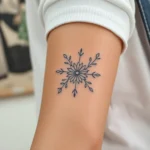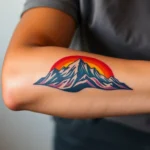Small Japanese tattoos pack incredible meaning into minimal space making them perfect for first-time ink enthusiasts or anyone seeking subtle yet powerful body art. We’ve discovered that these delicate designs offer the rich symbolism and artistic beauty of traditional Japanese tattooing without requiring large canvas areas on your body.
Japanese minimalist tattoos blend ancient cultural significance with modern aesthetic preferences. From tiny cherry blossoms representing life’s fleeting beauty to small koi fish symbolizing perseverance these compact designs tell profound stories through clean lines and thoughtful placement.
Whether you’re drawn to the elegance of a small kanji character the grace of a miniature crane or the strength represented by a petite dragon we’ll guide you through the most captivating small Japanese tattoo ideas that honor this timeless art form while fitting perfectly into contemporary lifestyles.
Small Japanese Kanji Character Tattoos
Kanji characters offer some of the most meaningful and visually striking options for small Japanese tattoos. We’ll explore how these ancient symbols can create powerful personal statements in compact designs.
Single Character Meanings
Understanding individual kanji meanings helps us choose characters that truly resonate with our personal values and aspirations. Each symbol carries centuries of cultural significance and philosophical depth that makes it perfect for meaningful body art.
愛 (Ai) represents love in its purest form, encompassing romantic love, family bonds, and universal compassion. This character’s flowing strokes create an elegant design that works beautifully on wrists, behind ears, or on fingers.
力 (Chikara) symbolizes strength and power, both physical and mental resilience. We often see this bold character chosen by those overcoming challenges or celebrating personal victories.
和 (Wa) embodies harmony, peace, and unity with nature and others. This balanced character reflects Japan’s cultural emphasis on living in harmony with one’s surroundings.
希 (Ki) means hope and represents optimism for the future. Its delicate structure makes it ideal for small, discrete placements while carrying profound emotional weight.
Popular Kanji Symbols
Modern tattoo enthusiasts gravitate toward exact kanji characters that blend traditional meaning with contemporary appeal. We’ve identified the most requested symbols in today’s tattoo studios.
勇 (Yu) stands for courage and bravery, making it popular among military personnel, first responders, and anyone facing life transitions. This character’s strong vertical lines create visual impact even in small sizes.
夢 (Yume) represents dreams and aspirations, appealing to artists, entrepreneurs, and dreamers pursuing their goals. Its complex structure offers interesting design possibilities for creative interpretations.
美 (Bi) symbolizes beauty in all its forms, from physical appearance to inner grace. We see this character frequently chosen for its aesthetic appeal and positive connotations.
忍 (Nin) means patience, endurance, and perseverance, connecting to the samurai and ninja traditions. This character resonates with people who value mental fortitude and quiet strength.
Placement Ideas for Kanji
Strategic placement enhances kanji tattoos’ visual impact while respecting their cultural significance. We recommend considering both aesthetic appeal and personal meaning when choosing locations.
Wrist placements work exceptionally well for single kanji characters, creating readable designs that remain visible during daily activities. The natural curve of the wrist complements most kanji structures.
Behind the ear locations offer discrete options for those wanting meaningful tattoos without workplace visibility concerns. This placement works best with simpler kanji designs that maintain clarity at small sizes.
Finger tattoos using kanji create unique personal statements, though we recommend choosing characters with fewer strokes to ensure longevity and readability. Ring finger placements are particularly popular for relationship-themed kanji.
Ankle and foot areas provide excellent canvases for kanji characters, especially when combined with small complementary elements like cherry blossoms or geometric patterns.
Minimalist Japanese Nature Elements
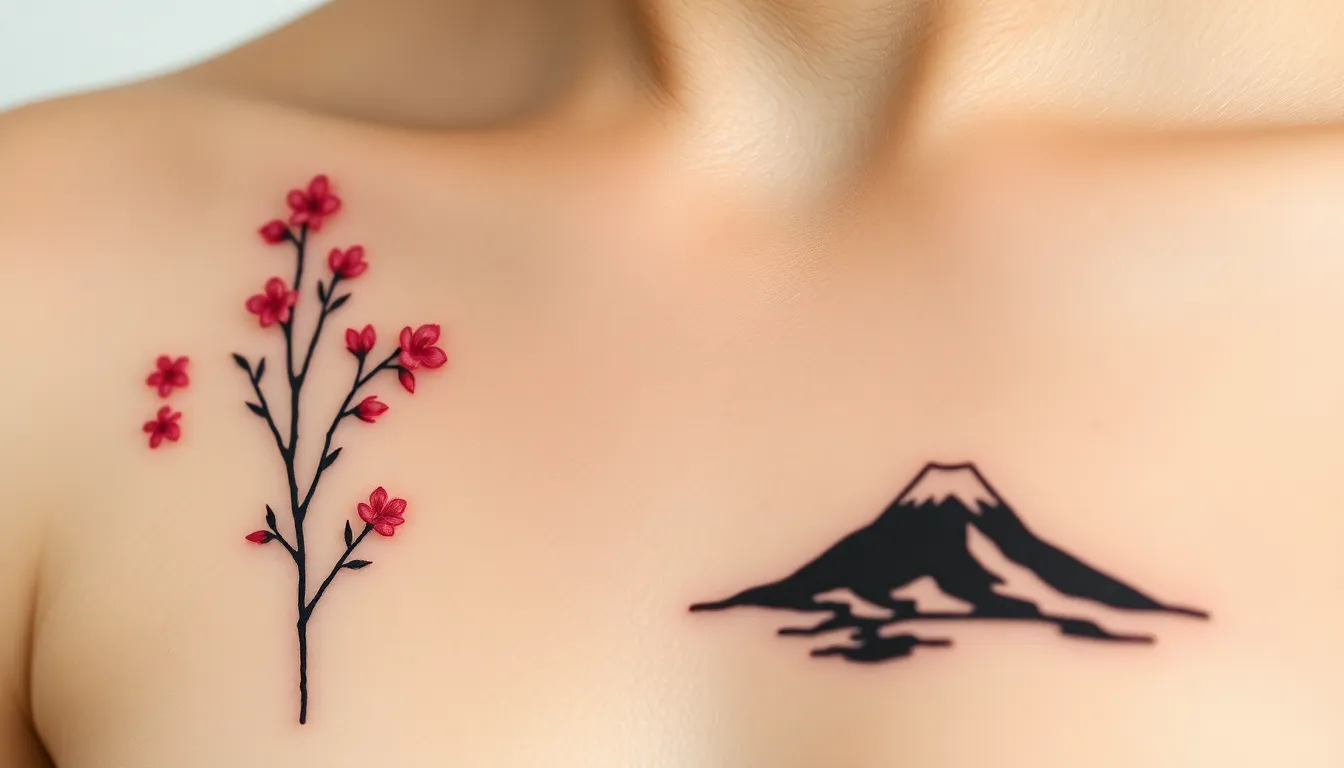
Nature provides endless inspiration for small Japanese tattoos that capture profound meaning in simple designs. These natural elements offer perfect balance between cultural authenticity and modern minimalist aesthetics.
Cherry Blossom Designs
Cherry blossom tattoos embody the Japanese concept of mono no aware, celebrating the transient beauty of life. Single bloom designs work beautifully on the wrist or behind the ear, featuring delicate petals with minimal shading. Branch motifs look stunning along the collarbone or forearm, showcasing the elegant curve of cherry blossom stems. Small cluster arrangements create intimate pieces perfect for the ankle or shoulder blade. These designs often incorporate soft pink tones or remain in classic black ink for timeless appeal.
Bamboo Tattoos
Bamboo symbolizes unwavering strength and flexibility in Japanese culture, making it ideal for minimalist tattoo art. Simple vertical lines create powerful statements on the forearm or calf, representing the plant’s straight growth pattern. Single stalk designs emphasize clean geometry while maintaining deep cultural significance. Joint segments add subtle detail without overwhelming the minimalist aesthetic. These tattoos work exceptionally well in small formats, allowing the bamboo’s natural elegance to shine through precise linework.
Mount Fuji Silhouettes
Mount Fuji tattoos capture Japan’s most iconic natural landmark in beautifully simplified forms. Silhouette designs featuring the mountain’s distinctive triangular peak create striking small tattoos for the wrist or ankle. Sunset backgrounds add dramatic flair with minimal color gradients in orange and pink. Moonlit versions offer mysterious appeal using subtle gray shading techniques. These designs symbolize endurance, spiritual journey, and connection to nature’s majesty. Small Mount Fuji tattoos often incorporate traditional Japanese wave patterns at the base, creating cohesive compositions that honor both land and sea elements.
Tiny Japanese Animal Motifs
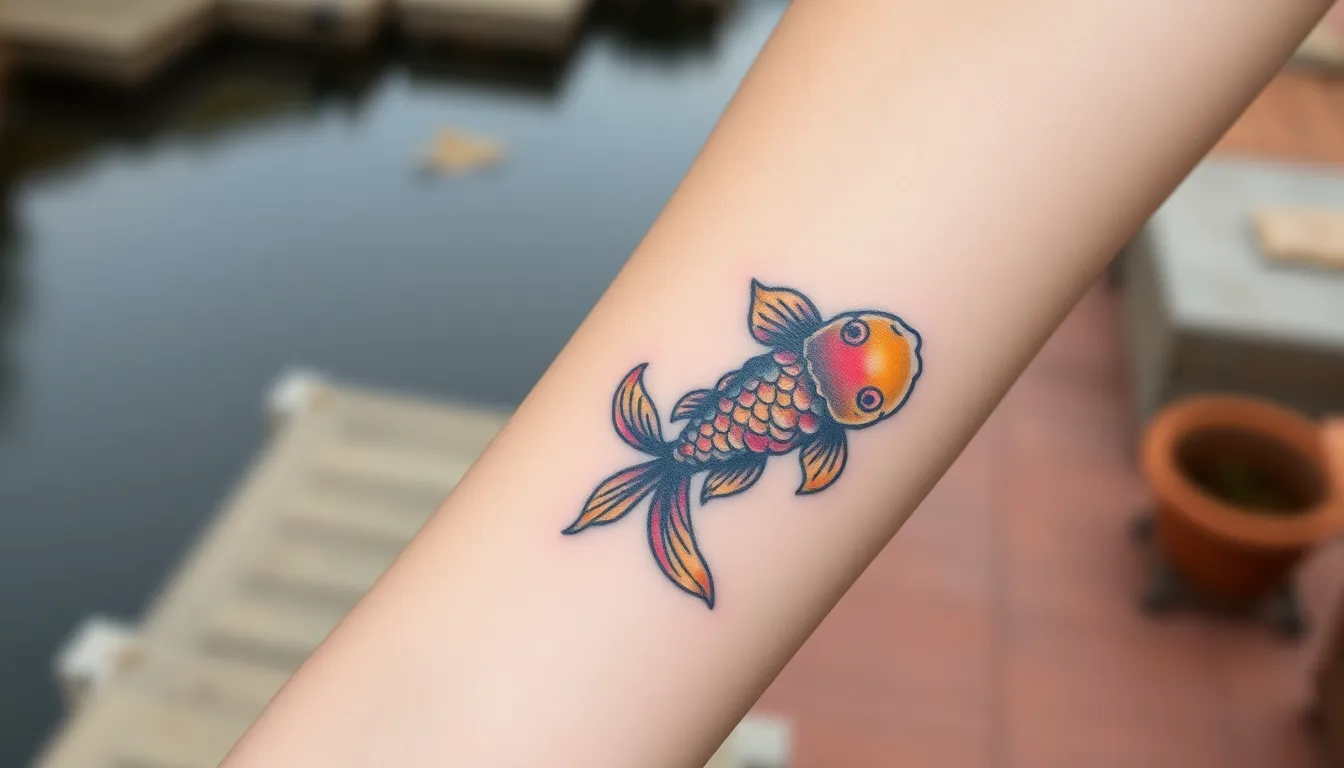
Animal symbolism plays a crucial role in Japanese tattooing, where each creature carries profound cultural meanings and spiritual significance. We’ll explore the most captivating small animal designs that honor traditional Japanese artistry while fitting perfectly into modern minimalist aesthetics.
Koi Fish Mini Designs
Koi fish represent perseverance and good luck in Japanese culture, making them ideal choices for meaningful small tattoos. These elegant designs work beautifully when scaled down, featuring flowing lines that capture the fish’s graceful movement in compact spaces.
Simple koi silhouettes create striking visuals on the wrist, ankle, or behind the ear. We recommend incorporating traditional elements like water ripples or lotus petals to enhance the design’s authenticity. Colorful mini koi can feature vibrant oranges, reds, and blacks that pop against the skin, while black and grey versions offer sophisticated, understated elegance.
Placement options for koi mini designs include the forearm, shoulder blade, or even fingers for those seeking ultra-subtle options. These designs symbolize determination and the ability to overcome obstacles, making them perfect for individuals celebrating personal growth or new beginnings.
Small Dragon Tattoos
Dragons traditionally appear as large-scale tattoos, but minimalist techniques allow for powerful small dragon designs that maintain their symbolic strength. These creatures represent power, wisdom, and protection in Japanese mythology, making them potent choices for compact tattoos.
Simplified dragon silhouettes focus on essential elements like curved bodies, distinctive claws, and flowing whiskers. We suggest emphasizing the dragon’s serpentine form through clean, bold lines that create visual impact without overwhelming detail. Coiled dragon designs work exceptionally well for circular placements like the shoulder or ankle.
Modern interpretations might feature geometric dragon forms or abstract representations that capture the essence of these mythical beings. Small dragon tattoos typically measure 2-3 inches and work best on areas with smooth skin like the upper arm, calf, or back of the neck.
Crane and Bird Symbols
Cranes symbolize longevity and good fortune in Japanese culture, while other birds like sparrows and swallows represent love, protection, and safe journeys. These delicate creatures translate beautifully into small tattoo designs that celebrate life’s precious moments.
Single crane designs emphasize the bird’s elegant neck and distinctive crown, creating graceful silhouettes perfect for vertical placements. We often see these positioned along the spine, forearm, or shin where their natural proportions shine. Flying crane motifs capture movement and freedom through outstretched wings and ever-changing poses.
Sparrow and swallow tattoos offer additional symbolism, with sparrows representing joy and simplicity while swallows signify protection and loyalty. These smaller birds work excellently for tiny tattoos on fingers, wrists, or behind the ears. Multiple bird designs can create flowing compositions that follow the body’s natural curves, particularly effective on the ribcage or collarbone area.
Small Japanese Wave and Water Designs

Water holds profound significance in Japanese culture, representing strength, resilience, and the eternal flow of life. These fluid designs offer stunning options for small tattoos that capture the essence of Japanese artistry.
Hokusai Wave Variations
Hokusai wave variations draw inspiration from “The Great Wave off Kanagawa,” one of Japan’s most iconic artworks. We love how these designs blend traditional Japanese art with modern tattoo styles, creating timeless pieces that honor cultural heritage. These simplified versions maintain the original artwork’s ever-changing movement while fitting perfectly into smaller spaces on your body.
Placement options for Hokusai variations work beautifully on the wrist, ankle, or shoulder blade. The wave’s characteristic curved lines and foam caps translate exceptionally well to miniature formats. We recommend incorporating blue and white ink to stay true to the original’s color palette while adding personal touches through size adjustments.
Modern interpretations of Hokusai waves emphasize the design’s essential elements. Artists often focus on the wave’s distinctive curl and the dramatic spray of water droplets. These adaptations preserve the artwork’s symbolic meaning of overcoming life’s challenges while creating visually striking small tattoos.
Simple Wave Patterns
Simple wave patterns offer minimalist interpretations perfect for those seeking subtle Japanese symbolism. We appreciate how these designs feature clean lines and minimal shading, making them ideal for small areas like behind the ear or on fingers. These streamlined patterns capture water’s flowing essence without overwhelming delicate placement areas.
Customization opportunities with simple wave patterns allow for personal expression within traditional boundaries. Different wave shapes and sizes can represent various life experiences or personal meanings. We suggest working with your artist to adjust the wave’s height, curve, and flow to match your individual story.
Strategic placement enhances simple wave patterns’ visual impact significantly. The wrist showcases these designs beautifully during daily activities, while ankle placements create elegant accents. We find that finger wave tattoos make particularly powerful statements even though their small size.
Water Drop Elements
Water drop elements symbolize purity and clarity in Japanese tattoo traditions. We love incorporating these designs as standalone pieces or combining them with wave patterns for added depth. These elegant additions represent life’s precious moments and the importance of cherishing each experience.
Combination possibilities with water drop elements create versatile design options. Pairing drops with simple waves enhances the overall water theme while maintaining the tattoo’s small scale. We recommend discussing placement strategies that allow both elements to complement each other harmoniously.
Symbolic meanings of water drops extend beyond their visual appeal. These elements represent renewal, cleansing, and new beginnings in Japanese culture. We find that clients often choose water drop tattoos during important life transitions or personal growth periods.
Compact Japanese Floral Tattoos
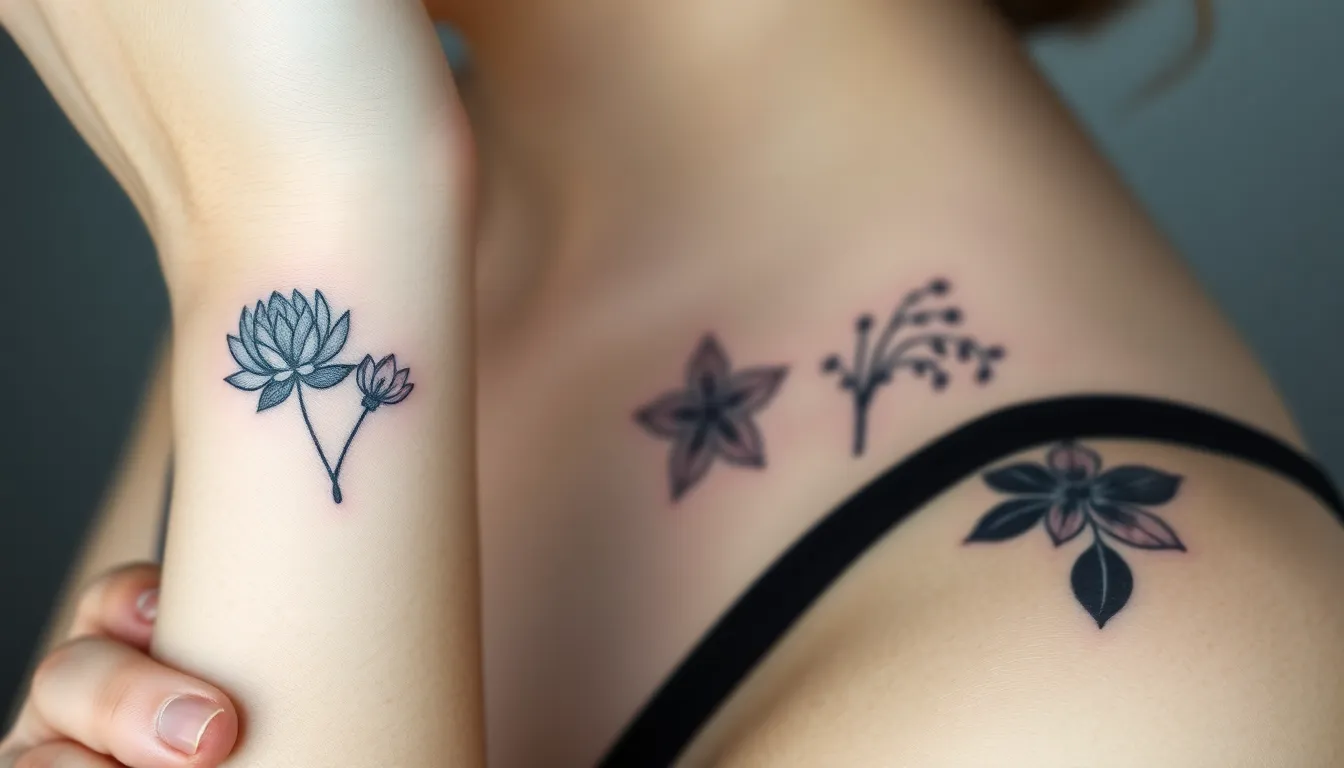
Japanese floral motifs capture the essence of nature’s beauty in delicate, meaningful designs. These compact tattoos blend traditional symbolism with contemporary minimalist aesthetics.
Lotus Flower Designs
Lotus flowers symbolize spiritual growth and enlightenment in Japanese culture, representing the groundbreaking journey from darkness to light. We often see these designs depicted in various bloom stages, from tight buds to fully opened petals that showcase intricate detail work. Artists typically include subtle water ripples around the lotus base to enhance the spiritual connection to purification and rebirth.
Small lotus tattoos work beautifully on the wrist, ankle, or behind the ear where their delicate petals can unfold naturally. The design’s versatility allows for single color work in black ink or soft color gradients that highlight each petal’s unique shape.
Chrysanthemum Patterns
Chrysanthemums represent longevity, honor, and loyalty while serving as a symbol of the Japanese monarchy throughout history. These flowers translate perfectly into bold, simple line work that maintains their regal significance in compact formats. We recommend chrysanthemum designs for clients seeking tattoos that embody strength and noble character.
The geometric nature of chrysanthemum petals makes them ideal for minimalist interpretations that focus on clean lines and symmetrical patterns. Artists often combine these blooms with other traditional elements like flowing water or delicate branches to create more intricate compositions. Placement options include the forearm, shoulder blade, or calf where the flower’s radiating petals can expand outward naturally.
Plum Blossom Artwork
Plum blossoms herald spring’s arrival and symbolize new beginnings, beauty, and resilience against adversity. These delicate flowers represent hope and perseverance since they bloom in late winter when conditions are still harsh. We find plum blossom tattoos particularly meaningful for clients marking important life transitions or personal growth.
Artists typically render plum blossoms in minimalist styles that emphasize their five-petaled structure and graceful branching patterns. The design works exceptionally well when combined with thin branch elements or small leaves that create movement across the skin. Popular placement areas include the collarbone, inner wrist, or along the ribcage where the organic flow of branches can follow the body’s natural curves.
Small Japanese Symbol Combinations
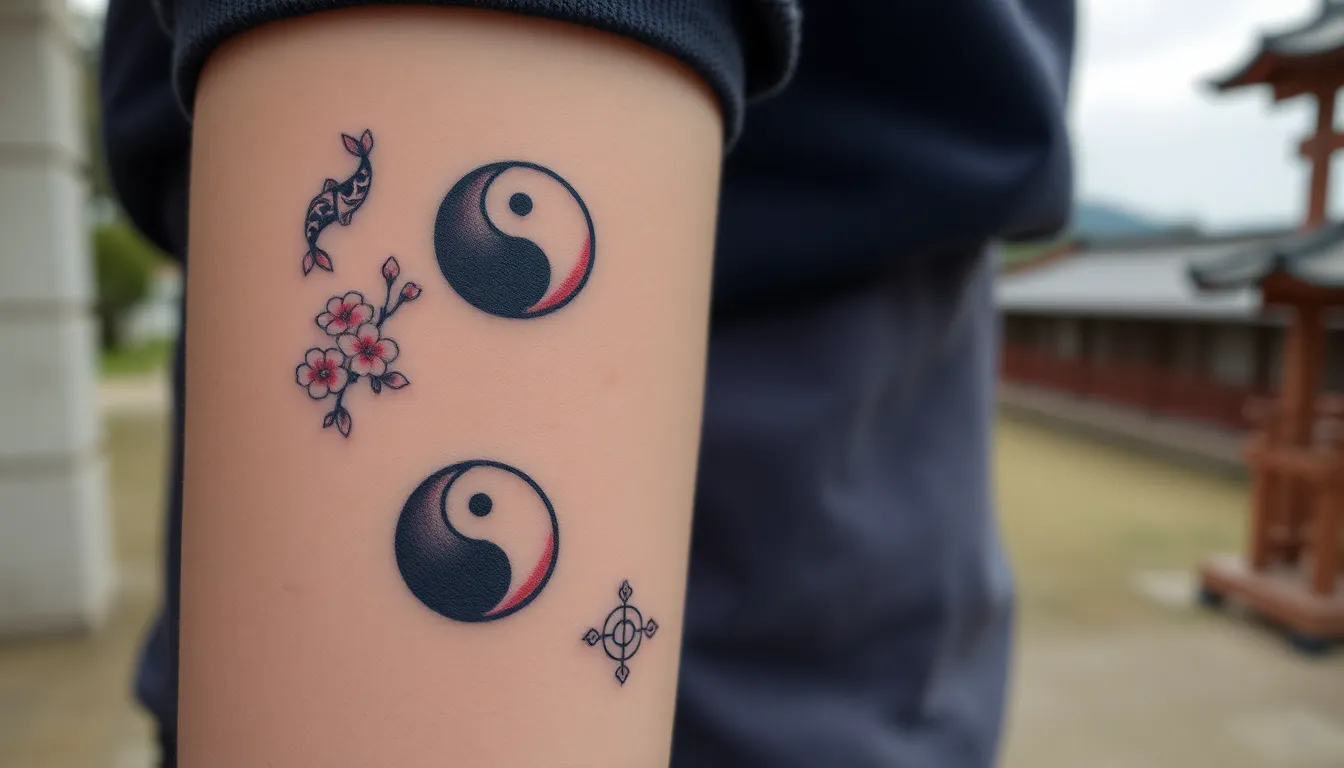
Creating powerful tattoo designs becomes effortless when we combine multiple Japanese symbols into harmonious compositions. These fusion designs amplify cultural meaning while maintaining the elegance of minimalist artistry.
Yin Yang with Japanese Elements
Yin Yang with Cherry Blossoms transforms the traditional balance symbol into a celebration of temporary beauty and eternal harmony. We recommend placing these designs on the shoulder blade or inner forearm where the circular composition can shine. Adding delicate pink petals around the yin yang creates visual flow while symbolizing life’s precious moments.
Yin Yang with Koi Fish elevates the concept of balance by incorporating symbols of resilience and determination. These combinations work beautifully on the wrist or ankle, where the curved koi can follow the natural contours of your body. Popular color schemes include black and gray koi within traditional yin yang circles, or vibrant orange and blue fish for those seeking bolder statements.
Small yin yang tattoos paired with kanji characters like 平和 (heiwa, meaning peace) create deeply personal symbols that speak to your individual journey toward balance and enlightenment.
Torii Gate Miniatures
Sacred Gateway Designs capture Japan’s spiritual essence through miniature torii representations that symbolize protection and connection to the divine. We love how these gates work as standalone pieces on fingers or wrists, creating powerful statements even though their compact size.
Mountain and Torii Combinations blend spiritual symbolism with natural beauty, often featuring Mount Fuji silhouettes behind minimalist gate structures. These designs work exceptionally well on the ankle or behind the ear, where their vertical orientation creates elegant visual lines.
Cherry Blossom Torii Scenes incorporate falling petals around sacred gates, representing the intersection of spiritual growth and life’s fleeting moments. Placement options include the collarbone area or inner wrist, where these detailed compositions can tell complete stories within small spaces.
Zen Circle Designs
Traditional Enso Circles embody enlightenment and life’s cyclical nature through their incomplete circular brushstrokes. We recommend these powerful symbols for the wrist or shoulder, where their simple elegance can make profound statements about personal growth and acceptance.
Enso with Kanji Integration combines Zen circles with meaningful characters like 禅 (zen) or 道 (do, meaning way), creating personalized symbols of your spiritual journey. These combinations work beautifully on the forearm or ankle, allowing both elements to complement each other perfectly.
Floral Enso Variations incorporate cherry blossoms or lotus petals within or around the circle, symbolizing the beauty found in imperfection and constant change. Popular placements include behind the ear or on the inner arm, where these delicate details can be appreciated up close.
Minimalist Brush Stroke Circles capture the essence of traditional Japanese calligraphy in tattoo form, representing meditation and mindfulness through their organic, hand drawn appearance.
Japanese Calligraphy Style Tattoos
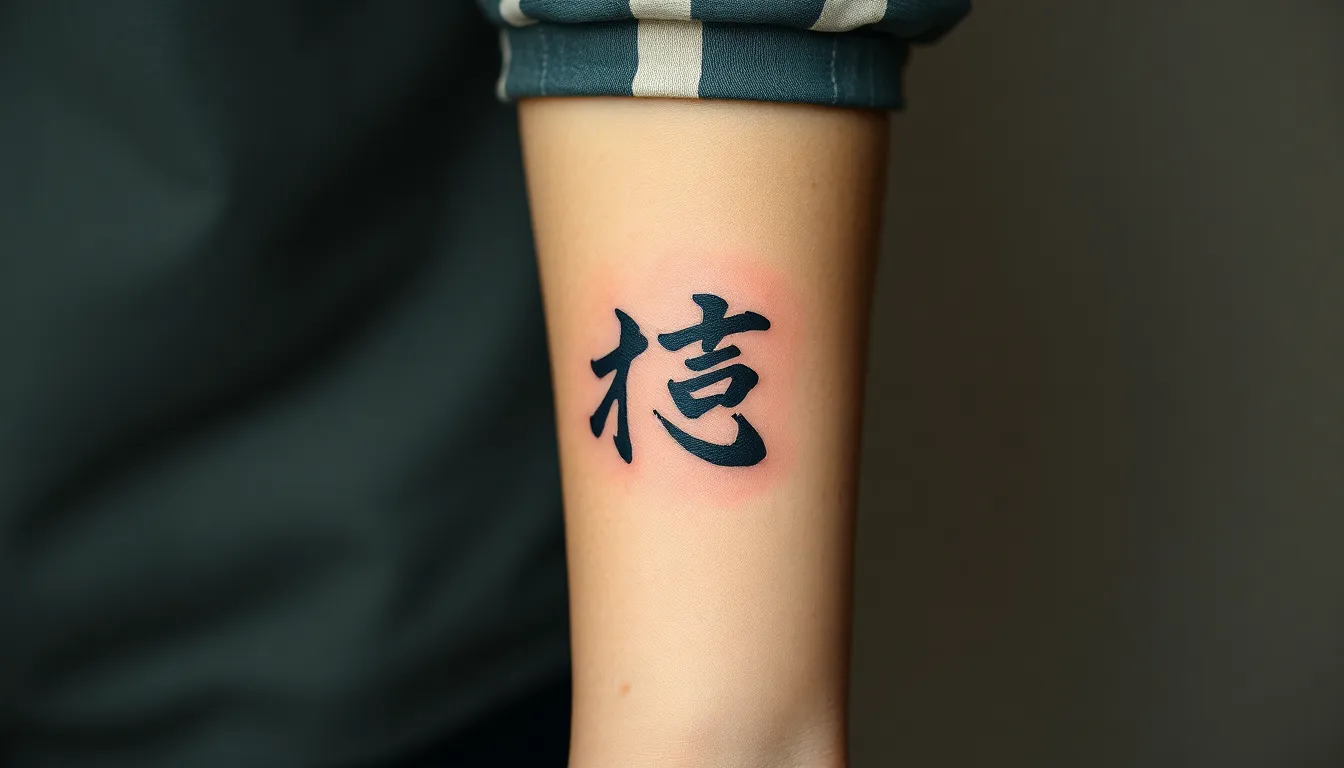
Japanese calligraphy tattoos transform ancient brushwork into stunning body art that captures profound meanings within compact spaces. These designs showcase the elegance of kanji characters like 強さ (strength), 希望 (hope), and 愛 (love) through artistic flow and traditional aesthetics.
Brush Stroke Techniques
Brush stroke techniques in Japanese calligraphy tattoos replicate the ever-changing energy found in authentic shodō art. Flexible brushes create varying thickness and fluidity that translates beautifully to tattoo designs, mimicking sharp lines and delicate curves with precision. Bold strokes convey power and strength, while gentle sweeping movements express softer emotions and meanings. Artists master the art of recreating brush dynamics using tattoo needles, capturing the natural flow of ink on paper. Traditional brushwork varies dramatically based on the intended emotion, from forceful kanji representing courage to flowing characters symbolizing peace.
Traditional Script Styles
Traditional script styles offer distinct visual effects that enhance the meaning and readability of Japanese calligraphy tattoos. Kaisho represents the square, block style that provides clear, readable characters perfect for first time tattoo enthusiasts. Gyōsho delivers semi-cursive elegance that balances readability with artistic flow, making it popular for wrist and ankle placements. Sōsho creates fully cursive designs that prioritize artistic expression over immediate recognition, appealing to those seeking more abstract interpretations. Kanji characters dominate traditional styles due to their thousands of available symbols with exact meanings. Historical scripts sometimes incorporate kana elements to add cultural authenticity and visual variety to small tattoo designs.
Modern Calligraphy Adaptations
Modern adaptations blend traditional brushwork with contemporary tattoo aesthetics, creating minimalist designs that maintain cultural reverence. Artists simplify complex strokes while integrating negative space for visual balance and modern appeal. Temporary tattoo studios showcase wide ranges of adapted calligraphy, from classic kanji to creative interpretations of Japanese words. Online galleries feature contemporary versions that appeal to current tastes while honoring traditional techniques. Creative interpretations often combine multiple characters or integrate calligraphy with other Japanese elements like cherry blossoms or waves. Studios now offer personalized adaptations that translate meaningful English words into stylized Japanese characters, bridging cultural gaps while maintaining artistic integrity.
Placement Ideas for Small Japanese Tattoos
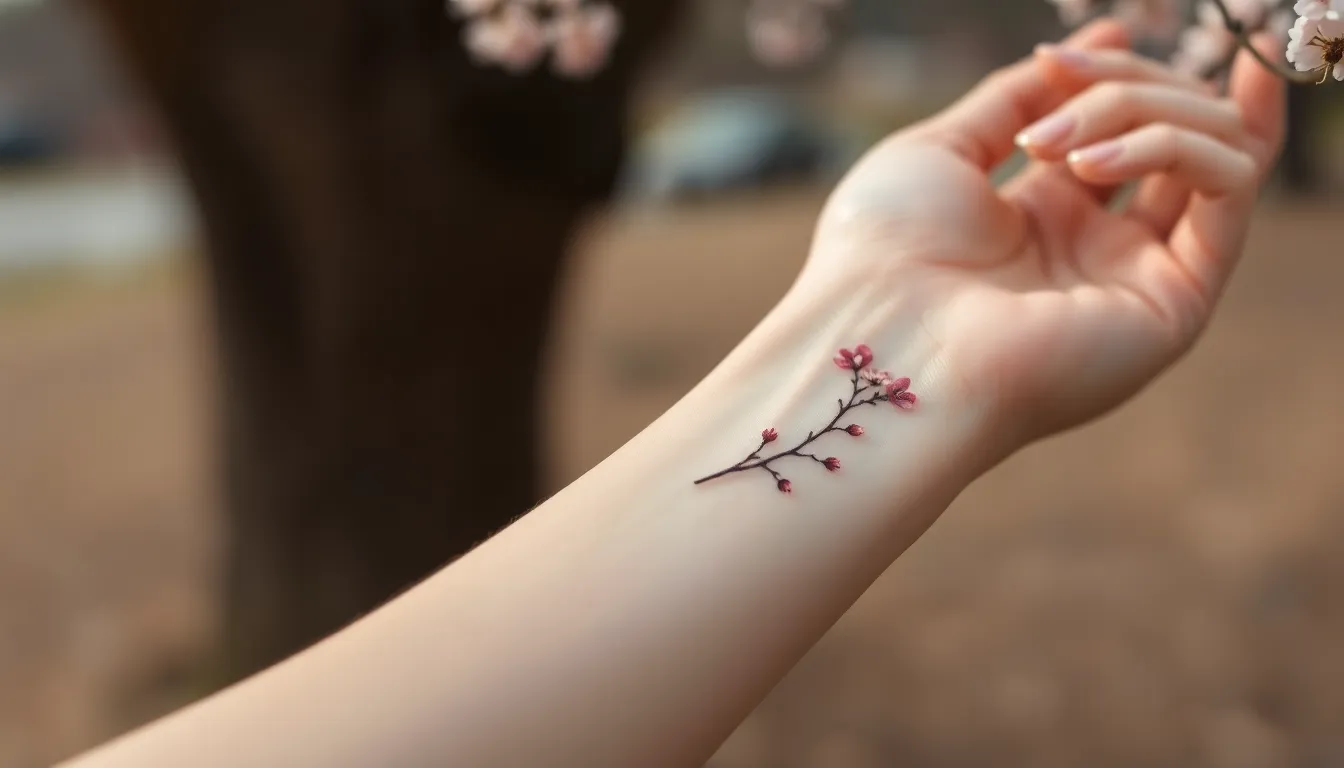
Strategic placement amplifies the visual impact of your small Japanese tattoo while ensuring it complements your body’s natural contours. We’ll explore the most popular locations that showcase these meaningful designs beautifully.
Wrist and Ankle Locations
Wrist placements offer excellent visibility for your small Japanese tattoo while maintaining professional discretion when needed. Cherry blossom branches work exceptionally well along the wrist’s natural curve, with 2-3 delicate flowers creating an elegant flow. Minimalist kanji symbols like 愛 (love) or 力 (strength) sit perfectly on the inner wrist, measuring approximately 1-2 inches for optimal readability.
Ankle positioning provides a feminine and subtle canvas for Japanese motifs. Small wave designs wrap gracefully around the ankle bone, symbolizing life’s constant flow and movement. Tiny koi fish swimming upward along the ankle create a ever-changing vertical composition that draws the eye naturally. We recommend placing these designs 2-3 inches above the ankle bone for the most flattering proportions.
Behind the Ear Options
Behind the ear placement creates an intimate and mysterious location perfect for delicate Japanese designs. Tiny chrysanthemum flowers, measuring less than 1 inch, fit beautifully in this curved space while representing longevity and honor. Small lotus blossoms work exceptionally well here, with their circular petals complementing the ear’s natural shape.
Minimalist approach works best for this location due to limited space and skin sensitivity. Single kanji characters like 美 (beauty) or 和 (harmony) create striking statements without overwhelming the area. We suggest keeping designs under 0.75 inches to maintain clarity and prevent distortion over time.
Finger and Hand Placements
Finger tattoos require careful consideration due to frequent hand washing and natural skin regeneration. Small Japanese elements like tiny dragon scales along the finger’s side create subtle yet powerful symbolism. Single cherry blossoms on ring fingers represent eternal love and commitment, while minimalist wave patterns on index fingers symbolize strength and adaptability.
Hand placements offer more space for slightly larger designs while maintaining the small tattoo aesthetic. Small peony outlines on the hand’s back represent wealth and good fortune, with 1-2 inch dimensions providing perfect proportion. We recommend avoiding palm tattoos due to rapid fading and choosing locations between knuckles or along the hand’s outer edge for better longevity.
Color Considerations for Small Japanese Tattoos

Choosing the right colors for small Japanese tattoos requires careful balance between traditional aesthetics and visual clarity. We’ll explore how different color choices can enhance your design while maintaining its cultural authenticity.
Traditional Black Ink
Bold black ink serves as the foundation for most small Japanese tattoos. Traditional black outlines create strong visual contrast that makes intricate details pop even at compact scales. We recommend this approach for designs featuring dragons, koi fish, and kanji characters where precise linework matters most.
Shading techniques using black ink add depth without color complexity. Artists often use varying intensities of black to create dimensional effects in small wave patterns and cherry blossom silhouettes. This monochromatic approach ensures your tattoo remains crisp and readable as it ages.
Black ink highlights the authentic spirit of traditional Japanese tattooing. Many classic motifs like samurai imagery and mythological symbols were originally created using bold black applications. We find this choice particularly effective for minimalist designs where every line carries important visual weight.
Minimal Color Accents
Subtle color touches prevent visual clutter in small Japanese tattoos. Strategic placement of soft pink for cherry blossoms or gentle blue for water elements adds interest without overwhelming the design. We suggest limiting accent colors to one or two shades maximum for optimal clarity.
Blue and green accents work exceptionally well in nature-inspired designs. Ocean waves benefit from minimal blue highlights while bamboo motifs can incorporate soft green touches. These natural color choices maintain authenticity while improving the tattoo’s visual appeal.
Careful color selection preserves the elegance of compact Japanese designs. Overwhelming small tattoos with multiple bright colors diminishes their sophistication and cultural reverence. We recommend choosing accent colors that complement rather than compete with the primary black elements.
Red and Gold Highlights
Red ink carries profound symbolic meaning in Japanese tattoo tradition. This powerful color represents courage, passion, and protection in many cultural contexts. We often see red used sparingly in small dragon designs for eye details or in flower centers for cherry blossom tattoos.
Gold highlights symbolize wealth, luck, and positive energy. Artists frequently substitute yellow ink as a gold proxy to achieve similar effects in small scale work. These warm accents work beautifully in sun motifs, temple elements, and decorative kanji character details.
Strategic red and gold placement enhances without overpowering small designs. We recommend using these bold colors for exact focal points like a single dragon scale or lotus flower center. This selective approach maintains visual balance while honoring traditional Japanese color symbolism.
Conclusion
Small Japanese tattoos offer us the perfect opportunity to embrace centuries-old traditions while expressing our personal stories through meaningful art. These miniature masterpieces prove that size doesn’t diminish impact – whether we choose delicate cherry blossoms or powerful kanji characters.
The beauty lies in their versatility and timeless appeal. We can honor Japanese culture while creating something uniquely our own through thoughtful design choices and strategic placement.
Remember that these tattoos carry deep cultural significance beyond their aesthetic value. By choosing designs that resonate with our personal journey and working with skilled artists who understand traditional techniques we’re not just getting inked – we’re becoming part of an ancient artistic legacy that continues to inspire people worldwide.
Frequently Asked Questions
What makes small Japanese tattoos special?
Small Japanese tattoos combine ancient cultural symbolism with modern minimalist aesthetics. They feature rich meanings from traditional Japanese art while being perfect for first-time tattoo enthusiasts or those seeking subtle body art. These designs respect traditional art forms while fitting contemporary lifestyles, making them both meaningful and visually appealing.
What are the most popular small Japanese tattoo designs?
Popular designs include cherry blossoms (representing life’s beauty), koi fish (symbolizing perseverance), kanji characters (offering personal meaning), cranes (representing longevity), dragons (symbolizing power), and Mount Fuji silhouettes (representing endurance). Each design carries deep cultural significance while maintaining minimalist elegance.
Which kanji characters are best for small tattoos?
Popular kanji include 愛 (Ai) for love, 力 (Chikara) for strength, 和 (Wa) for harmony, 希 (Ki) for hope, 勇 (Yu) for courage, 夢 (Yume) for dreams, 美 (Bi) for beauty, and 忍 (Nin) for patience. These characters are visually striking and carry profound meanings that resonate with modern tattoo enthusiasts.
Where should I place my small Japanese tattoo?
Strategic placements include the wrist for visibility and discretion, behind the ear for intimacy, fingers for subtle symbolism, ankle for elegant display, collarbone for delicate designs, and forearm or shoulder blade for slightly larger pieces. Choose locations that enhance the design’s visual impact while respecting its cultural significance.
What colors work best for small Japanese tattoos?
Bold black ink serves as the foundation for most designs, ensuring clarity and longevity. Minimal color accents like soft pinks and blues maintain visual appeal without overwhelming small details. Red and gold highlights can be strategically used to enhance focal points, as they symbolize courage and luck in Japanese culture.
Do small Japanese tattoos have spiritual meanings?
Yes, many small Japanese tattoos carry spiritual significance. Lotus flowers represent spiritual growth and enlightenment, dragons symbolize wisdom and power, cranes represent protection and longevity, and Enso circles represent mindfulness and personal growth. These designs connect wearers to deeper philosophical concepts from Japanese culture.
Can I combine different Japanese elements in one small tattoo?
Absolutely! Popular combinations include Yin Yang with cherry blossoms, kanji characters with natural elements, torii gates with mountain motifs, and Enso circles with meaningful symbols. These combinations enhance cultural meaning while maintaining minimalist elegance, creating unique designs that tell personal stories.
What’s the difference between traditional and modern Japanese tattoo styles?
Traditional styles follow classical Japanese art principles with specific symbolism and placement rules. Modern adaptations blend these elements with contemporary minimalist aesthetics, creating cleaner lines and simplified forms while maintaining cultural reverence. Both approaches honor Japanese artistic traditions while appealing to different preferences.
